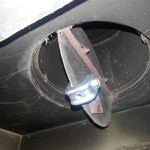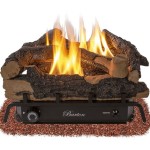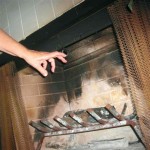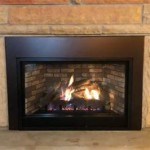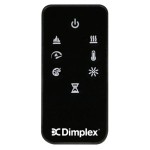How To Make an Outdoor Fireplace Draw
An outdoor fireplace can be a captivating addition to any backyard, extending the usability of outdoor spaces and providing a cozy atmosphere. However, a poorly designed or constructed fireplace can suffer from a critical flaw: poor draft, often referred to as "not drawing" properly. This article outlines the essential factors and steps necessary to ensure an outdoor fireplace possesses adequate draft, enabling efficient smoke removal and a more enjoyable fire experience.
A properly drawing fireplace effectively channels smoke and combustion gases upwards and out through the chimney, preventing them from spilling back into the surrounding area. Several interconnected elements contribute to this process, including firebox design, chimney height, flue size, and the presence of a sufficient supply of fresh air. Each of these aspects must be carefully considered during the planning and construction phases to achieve optimal performance.
Understanding the Principles of Fireplace Draft
The fundamental principle behind fireplace draft is the concept of buoyancy. Hot air, being less dense than cooler air, rises. The combustion process in the firebox generates hot gases which then flow upward into the chimney flue. This rising column of hot gas creates a pressure differential, with lower pressure inside the chimney compared to the surrounding atmosphere. This difference in pressure is the driving force behind the draft, pulling in fresh air at the base of the firebox to sustain combustion and expelling the smoke and gases through the top of the chimney.
Several factors can disrupt this delicate balance. Cold air downdrafts within the chimney, obstructions in the flue, inadequate chimney height, and insufficient air supply to the firebox can all impede the draft and cause smoke to spill back into the outdoor space. Therefore, a holistic approach is required to address all contributing elements and ensure a properly functioning fireplace.
The phenomenon of "reverse draft" can also occur, especially in certain weather conditions or when the fireplace is first lit. This happens when the air inside the chimney is significantly colder than the outside air. The cooler, denser air inside the chimney sinks, creating a downward flow that opposes the desired upward draft. Overcoming this initial hurdle often requires preheating the flue, a technique discussed later in this article.
Designing for Optimal Firebox and Chimney Dimensions
The dimensions of the firebox and chimney are critical determinants of fireplace draft. The firebox must be sized appropriately, considering the intended size of the fires. An overly large firebox can result in insufficient heat to establish a strong draft, while an undersized firebox can lead to overcrowding and inefficient combustion. The depth of the firebox is also important, influencing how effectively the rising heat is channeled towards the chimney.
Chimney height is paramount. A taller chimney creates a greater pressure differential, resulting in a stronger draft. The general recommendation is that the chimney should extend at least three feet above the highest point where it penetrates the roof and at least two feet higher than any part of the building or neighboring structure within a ten-foot radius. This height requirement ensures that the chimney is exposed to prevailing winds and avoids turbulent air currents that can disrupt the draft.
The flue size, or the cross-sectional area of the chimney, must also be correctly proportioned to the firebox opening. A flue that is too small can restrict the flow of smoke and gases, leading to backdrafting. Conversely, a flue that is too large can allow the rising gases to cool too quickly, reducing the buoyancy effect and diminishing the draft. The ideal flue size is typically determined by calculating the firebox opening area and consulting relevant building codes and fireplace design guidelines, which often provide specific ratios and recommendations. Firebox openings should be appropriately sized and shaped to assist in properly transferring smoke to the flue.
Ensuring Adequate Air Supply and Addressing Downdrafts
Combustion requires oxygen. An adequate supply of fresh air is essential for sustaining a fire and maintaining a strong draft. In outdoor settings, this is less of a concern compared to indoor fireplaces, but it is still a factor to consider. Obstructions that may impede airflow around the firebox, such as dense landscaping or windbreaks positioned too close to the fireplace, should be avoided.
One common problem that hinders fireplace draft is downdraft, where cold air descends into the chimney, counteracting the upward flow of hot gases. Several strategies can be employed to mitigate downdrafts. A chimney cap can help deflect wind and prevent rain from entering the flue, both of which can contribute to downdrafts. Specialized chimney caps with directional vanes can further enhance draft by utilizing wind energy to create a vacuum effect.
Preheating the flue before lighting a fire can also significantly reduce the likelihood of downdrafts, particularly in cold weather. This can be achieved by burning a small amount of rolled up newspaper in the firebox or at the base of the flue. The warmth generated from the initial burn will help to establish an upward flow of air, warming the flue and preparing it to handle the larger volume of hot gases produced by the main fire. Using a handheld torch to add heat to the flue for several minutes can also assist in starting the flow.
Another method to combat downdrafts involves using a smoke guard or smoke shelf inside the firebox. This feature creates a barrier that deflects downdrafts and prevents them from directly entering the firebox, promoting a more stable and consistent draft. The smoke shelf should be positioned at the appropriate height and angle to effectively redirect air currents.
Location also plays a critical role in preventing downdrafts. Positioning the fireplace in an area sheltered from prevailing winds can minimize the impact of external air currents on the chimney. However, care must be taken to avoid creating a situation where the fireplace is enclosed in a confined space with limited air circulation.
The selection of firewood can also influence chimney draft. Wet or unseasoned wood requires more energy to burn, producing more smoke and less heat. This can overwhelm the chimney's draft capacity and result in smoke spillage. Using dry, seasoned wood ensures cleaner and more efficient combustion, generating higher flue temperatures and a stronger draft.
Regular maintenance is essential for optimal chimney performance. Creosote buildup inside the flue can restrict airflow and increase the risk of chimney fires, and can negatively impact draft. Regular inspections and cleaning by a qualified chimney sweep are thus highly recommended. Removing any debris, such as leaves, nests, or other obstructions, from the chimney will also help maintain proper airflow and ensure a clear path for smoke and gases to escape.
When designing an outdoor fireplace for optimal draft, meticulous attention to detail during the planning and construction phases is paramount. By understanding the principles of fireplace draft, carefully dimensioning the firebox and chimney, ensuring an adequate air supply, and taking steps to mitigate downdrafts, it is possible to create an outdoor fireplace that provides years of enjoyment without the frustration of smoke spillage and poor performance. Seeking professional advice from experienced fireplace designers or masons can be beneficial, especially for complex projects or when dealing with challenging site conditions. Consultation with local building officials will confirm compliance with all building codes and regulations.

Cabins Book A Guide To Building Your Own Nature Retreat Outdoor Fireplace Plans Designs

Outdoor Fireplace Plans Brick Chimney Cool Fire Pits

How To Build An Outdoor Fireplace Lovetoknow Plans Diy Backyard

Outdoor Fireplace Layout And Planning Landscaping Network

Rumford Fireplace Plans Instructions Dimensions Contemporary Outdoor Fireplaces

11 Quick Ways To Help Improve The Draw On Your Open Fireplace

Stonetutorials Living Stone Masonry

Outdoor Fireplace Is Not Drawing Smoke Doityourself Com Community Forums

Fireplace Dimensions Outdoor Kitchen Design Rustic

Build An Outdoor Fireplace The Shed
Related Posts


